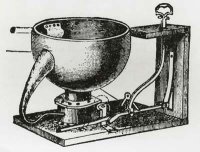Introduction Throughout human history, the development of sanitation systems has played a vital role in public health and hygiene. Among the remarkable innovations, the invention of the toilet stands as a pivotal moment. Revolutionizing the way we dispose of waste, the toilet has brought immense convenience, improved sanitation, and transformed our daily lives. This essay delves into the origins and significance of the toilet, its evolution, and its impact on human health and society.
Origins and Significance The origins of the toilet can be traced back to ancient civilizations. Archaeological evidence suggests that the Indus Valley Civilization in present-day Pakistan had some of the earliest known sewage systems around 2,500 BCE. These systems featured private and public toilets with a rudimentary flushing mechanism. Similarly, the ancient Romans had advanced public sanitation systems with communal toilets and sophisticated sewage infrastructure.
However, it was not until the 18th and 19th centuries that the modern toilet, as we know it today, came into existence. The invention of the flush toilet by Sir John Harrington, an English courtier, in 1596, marked a significant leap forward. Harrington's design, though not widely adopted, paved the way for future innovations in sanitation.
Evolution of the Toilet In the 19th century, the toilet underwent remarkable advancements. The introduction of the S-trap by Alexander Cummings in 1775 improved the efficiency of waste removal, preventing foul odors from permeating back into the bathroom. However, the real breakthrough came with the invention of the modern flush toilet by Thomas Crapper in the late 19th century. Crapper's design incorporated a water tank, a flushing mechanism, and a U-bend trap that prevented sewer gases from entering the living space.
Impact on Human Health and Society The invention of the toilet revolutionized public health and hygiene. Before the toilet, human waste disposal often involved the use of chamber pots or open defecation, leading to the spread of diseases and foul odors. The widespread adoption of toilets helped combat these issues by providing a more hygienic and efficient means of waste disposal.
Improved sanitation brought a significant reduction in waterborne diseases such as cholera, dysentery, and typhoid fever. The separation of human waste from living spaces and water sources prevented the contamination of drinking water, thus safeguarding public health. Moreover, the convenience and privacy offered by toilets brought a significant improvement in human comfort and dignity.
The toilet's impact on society cannot be understated. Access to proper sanitation has become a basic necessity, contributing to the overall well-being of communities. Furthermore, the invention of the toilet facilitated urbanization and improved living conditions in cities, as it allowed for higher population densities without compromising health.
Conclusion The invention of the toilet has been a transformative milestone in human history. From its humble origins to its modern-day designs, the toilet has provided us with improved hygiene, comfort, and public health. Its impact on society serves as a testament to the significance of innovative solutions in shaping the world we live in today.
